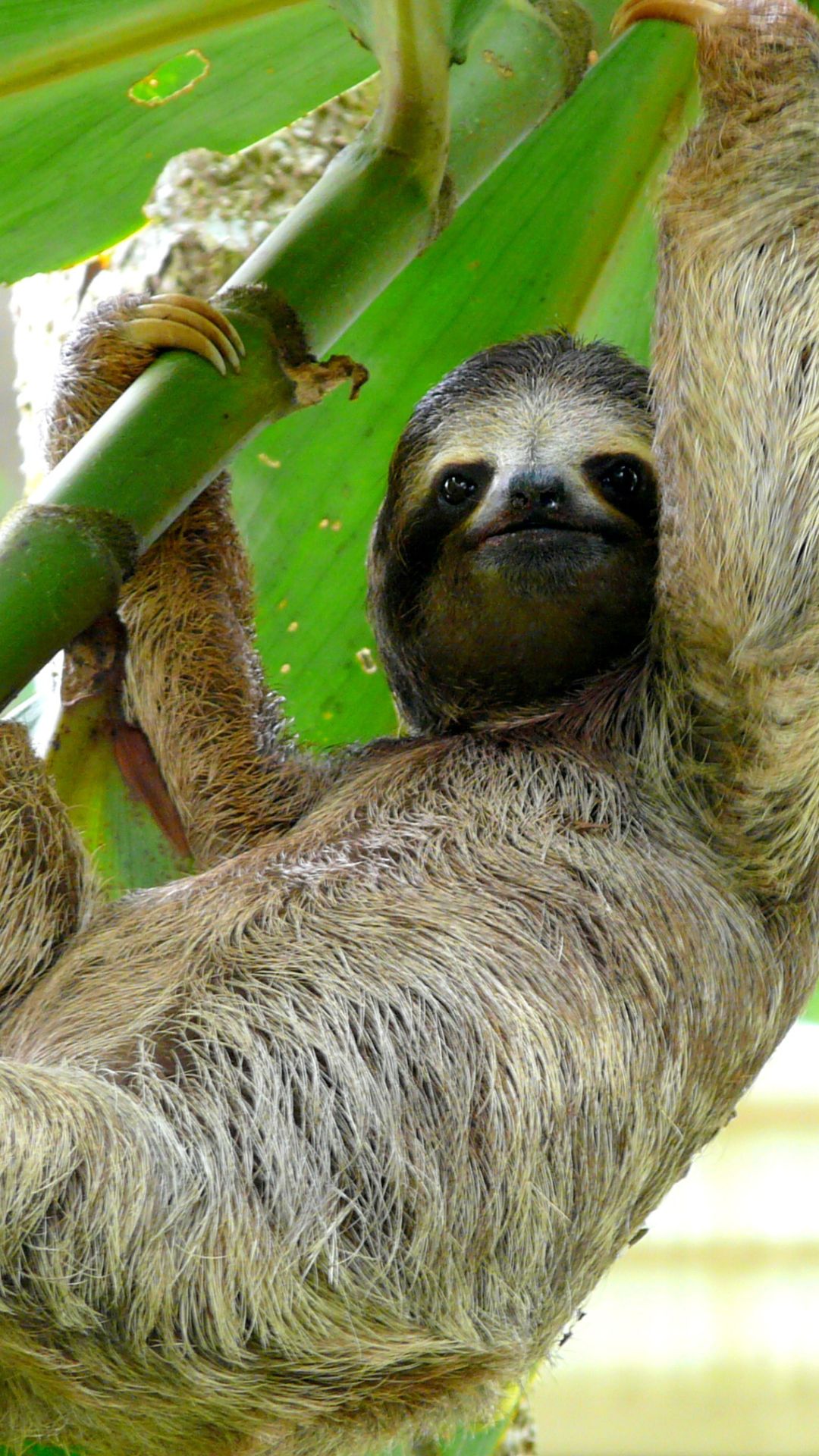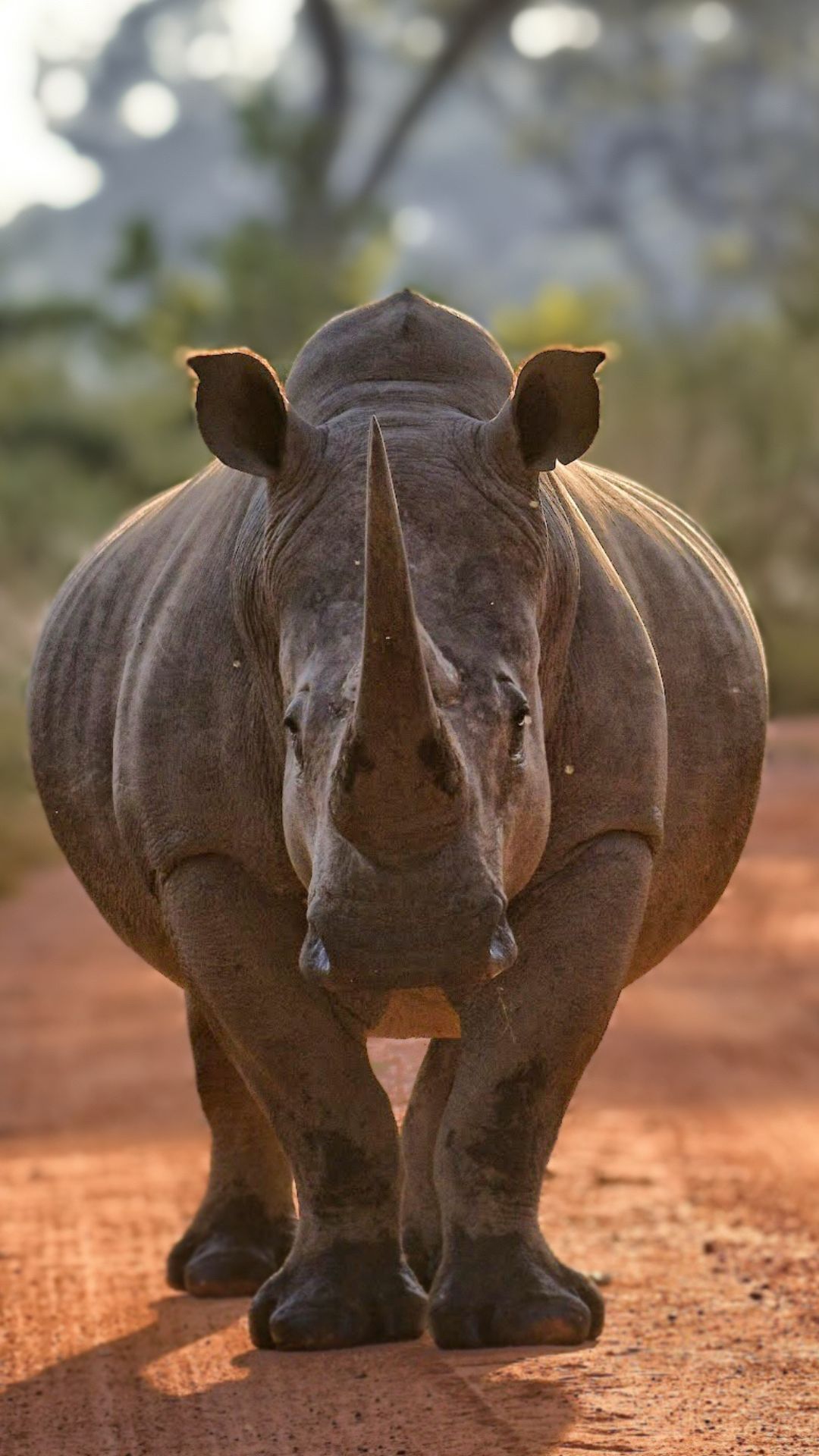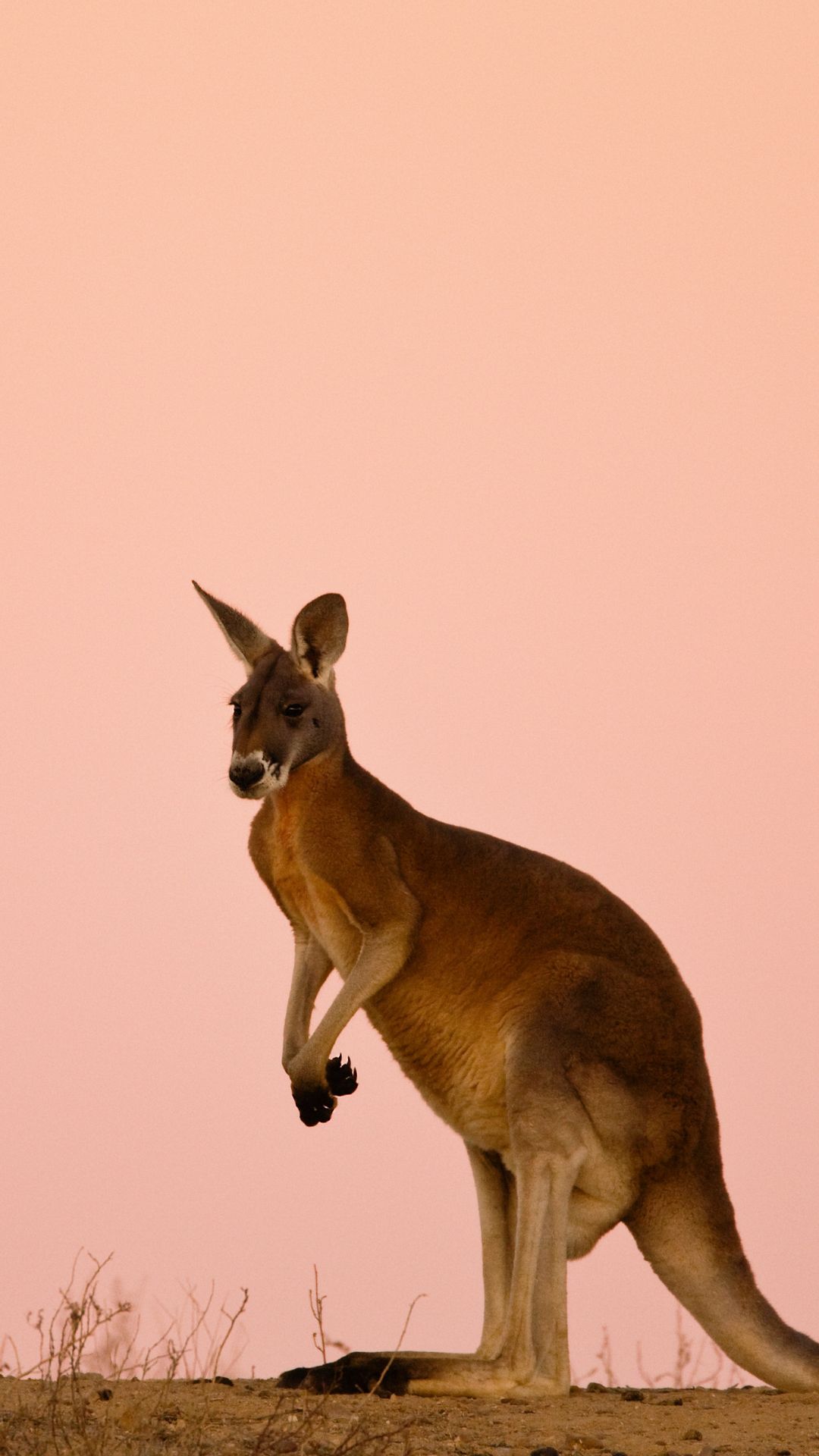Awe-inspiring places to spot incredible wildlife across the globe
Looking for an adventure with a difference? These stunning spots boast all manner of amazing animal-spotting opportunities


While there’s nothing like a relaxing beach break - where all there is to do is get wrapped up in a good book while listening to the sound of the ocean - sometimes we crave something a tad more memorable.
Since it’s estimated that there are around 8.7 million living animal species on earth there’s no wonder we, as curious humans, want to get lost in the beauty of nature from time to time. Watching and observing wild animals is one of the simplest, most rewarding acts we can do with our precious little time here on earth - a life-affirming, relaxing, simple act that’s incredibly rewarding.
Covered with 71 per cent water, our stunning planet provides endless opportunities to catch serene slick pods of dolphins, colossal orcas gliding through waves, and an array of fish so colourful they almost don’t seem real.
On land, the wildlife spotting opportunities are countless too - leopards in Sri Lanka, gorillas in Uganda, ancient cassowaries in Australia - there’s nothing more magical than witnessing these magnificent creatures in the wild. Wherever you are in the world, however, it’s important to remain respectful, never touch, feed, or get too close to wild animals, and simply enjoy them from afar.
So if you want your fix of wildlife, here are the best places in the world for incredible animal spotting opportunities.
The best places in the world to spot incredible wildlife
Sumatra, Indonesia for orangutans

A bucket list experience for anyone who appreciates the beauty of nature and the wildlife that inhabits it, spotting orangutans in the wild is inspiring stuff. While once these beautiful creatures were found across the whole island of Sumatra, now they’re mostly only spotted in the northern parts, with Gunung Leuser National Park being one of only two places in the world where you can see orangutans in the wild. Overflowing with diverse tropical forests and rich in beautiful flora and fauna, the Indonesian island of Sumatra begs to be explored on foot for a truly unforgettable adventure that’ll be remembered forever.
Habitats: Discover Earth's Precious Wild Places, £24.50 | Amazon
This fascinating book will help you discover how unexpected wildlife partnerships make up the habitats plants and animals call home.
Sri Lanka for leopards

One of the most underrated countries of the past decade, this idyllic island just south of India boasts wildly atmospheric beaches, UNESCO-protected ancient monuments and temples, great surf and so many wildlife spotting opportunities you’ll be spoilt for choice. Yala National Park is the place to head for leopard spotting where sightings are pretty much guaranteed. For a more relaxed safari, head to Kumana where sightings are fewer but the vibe is more tranquil.
Sign up to our free daily email for the latest royal and entertainment news, interesting opinion, expert advice on styling and beauty trends, and no-nonsense guides to the health and wellness questions you want answered.
Bhutan for sloth bears

The Jungle Book’s Baloo is based on the shaggy-looking black sloth bear found in India, Sri Lanka, and Bhutan. While the creatures may look cute and cuddly, they have been known to attack humans should they feel threatened, reason enough to stay well away. With its wild terrain, deep gorges, and dense forests, the landlocked kingdom of Bhutan is home to this enigmatic creature, which can be spotted around the tropical lowland areas of the south.
Namibia for zebras

Of the four species of zebra on the planet, two (the Hartman's zebra and Burchell's zebra) can be found in Namibia. A common sight in reserves throughout this sparsely populated country, you won’t have to roam far to see herds of the curious-looking creatures while spending time in Namibia.
Costa Rica for the two-toed sloth

The slow-moving, adorable two-toed sloth spends most of its time high up in the treetops, either sleeping or hanging upside down drying out from tropical storms. Most visitors to the verdant country of Costa Rica will get to see sloths in the wild without too much effort, especially if you spend time hiking around the coastal paths of the east coast.
Eastern Australia for the duck-billed platypus

Endemic to eastern Australia and Tasmania, the elusive duck-billed platypus is smaller than you might imagine, often making it tricky to spot it. With a little patience, however, it’s possible to see these shy intriguing creatures around Broken River at Eungella National Park.
Kenya for giraffes

At 17 feet tall, it’s hard to miss the 30,000 spectacular Maasai giraffes that roam wild in Kenya. The gentle creature can usually be found grazing on trees and shrubs while congregating in herds of up to 20.
Iceland for humpback whales

Iceland’s summer months are the best time for humpback whale watching when around 15,000 of the majestic marine mammals migrate to the icy waters surrounding the island. Head out on a boat from Reykjavik harbour for the best chance of spotting these huge creatures in the wild.
Northeastern Australia for the southern cassowary

With their huge black feathered bodies, strange coned heads and bright blue and red markings, cassowaries really are one of the most curious-looking birds on the planet. Driving along Australia’s east coast you’ll likely spot them crossing the roads or hanging around in forest dwellings near Cape Tribulation. But be careful not to stray too close, these flightless birds are incredibly powerful and have blade-like claws.
South Africa for white rhinos

Sadly there are only around 27,000 wild rhinos left on earth, a devastating fact that’s down to habitat loss and poaching. To see these utterly fascinating creatures from afar, Kruger National Park is a sound option where safari guides are on hand to help educate visitors to the country.
Australia for kangaroos and wallabies

Synonymous with Australia, kangaroos and wallabies can be seen all over the country, from humble backyards to the remote outback. But to see them best in all their hopping glory it’s best to head out to wide open expanses, in particular Mungo National Park where red kangaroos can often be spotted jumping through the bush.
Zambia for fruit bats

Between October to December every year, as many as 10 million fruit bats turn the skies of Zambia black as they swarm en masse from the Congo to Zambia's Kasanka National Park. As the world's largest mammal migration, it really is a spectacle to behold as the straw-coloured mammals descend on fruit trees to feast.
Sri Lanka for the slender loris

There are two types of loris found in Sri Lanka - the grey slender loris, which is also found in India, and the red slender loris, which is endemic to Sri Lanka. The grey loris is a lot easier to spot, especially in areas around Sigriyia, while the red loris is native to rainforests. Nocturnal, these sweet-looking creatures rarely leave the treetops they live in, coming out only at night to feast on small insects.
Tanzania for impala

Often gathering in large herds, it’s fairly easy to spot the elegant, yet swift impala. Known for their glossy beige-coloured fur and slender horns, they’re mainly active during the day around woodland areas or savannahs. Tanzania boasts one of the largest populations of impala antelopes in the world making it the prime destination for viewing these curious creatures.
India for water buffalo

Known for an array of beautiful wildlife, from tigers and elephants to King Cobras and snow leopards, India is a vast land covering a multitude of habitats. It’s also home to the majority of the world’s water buffalo, who are often found wallowing in rivers and large bodies of water. For particular striking water buffalo scenes head to Varanasi where the large ash-skinned beasts bathe in the River Ganges alongside pilgrims, devotees, and local children swimming.
The Peak District, UK for frogs and toads

The under-the-radar chocolate box village of Youlegrave in the UK’s Peak District is one of the best places to see masses of frogs and toads - so much so the village even has road signs warning drivers to be careful when riding through. Every year during late spring, thousands of khaki-coloured amphibians cross through the village to nearby bodies of water - it’s an incredible feat of nature that shouldn’t be missed.
The Maldives for sharks

With over 26 shark species, including blacktip reef sharks, zebra sharks and scalloped hammerheads, the Maldives offers a lot more than just honeymoon breaks. You’ll find most of these species in the shallow reefs around the islands and it’s possible to head straight out in the water to snorkel alongside them, just be sure to leave enough space so they don’t feel threatened.
Patagonia, Argentina for penguins

While penguins are abundant in Antarctica, it’s also one of the most remote places on Earth, meaning it’s not so straightforward heading to this untouched region. Patagonia, however, provides the perfect penguin-spotting opportunities since five species call this area home. The glaciers and national parks of Argentina’s southernmost region provide endless hiking opportunities that won’t fail to impress and with over one million pairs of Magellanic penguins breeding in this part of the country, you’re sure to spot your fair share of the black and white birds.
Koh Tao, Thailand for tropical fish

There’s a reason Koh Tao is known for its scuba diving schools - the reefs around the island teem with the most wonderfully colourful fish and sea life. Take the hiking path that goes right up and over the island to Tanote Bay and you’ll be met with butterflyfish, mosaic coral, and brightly painted angelfish.
Swallow Caye, Belize for manatees

With the largest population density of Antillean Manatees in the region, Swallow Caye, an island a few miles off the coast of Belize City, almost guarantees a manatee spotting in the wild since the pretty creatures feed on seagrass around the island’s mangroves. Also known as sea cows, these tranquil creatures are highly intelligent and have an average lifespan of around 40 years.
Uganda for gorillas

Bwindi Impenetrable National Park and Mgahinga Gorilla National Park are the two main gorilla spotting areas in Uganda, with the former coming out top in terms of popularity due to a larger population of gorillas. The country’s two dry seasons are prime viewing months - from December to February and from June to August, visitors will be in with a better chance of seeing these great apes that share 98 per cent of their genetic code with humans.
The Scottish Highlands for stags and deer

Great hiking opportunities, stunning natural pools, and epic mountain ranges provide the perfect backdrop to spot the majestic stags and deer of Scotland. It’s worth exploring the area in October and November when you might be lucky enough to see stags challenge each other by elaborately and noisily clashing their antlers as the braver newcomers challenge the area's most dominant stags.
India for the Bengal tiger

Known for prowling tropical rainforests, mangroves, and swathes of grassland, the impressive Bengal tiger can be spotted in various national parks throughout India. As the largest and most powerful member of the big cat family, it’s worth trying your luck at either Bandhavgarh National Park in Madhya Pradesh or Uttaranchal’s Corbett National Park.
Madagascar for the ring-tailed lemur

Madagascar’s Berenty Reserve is a haven for these inquisitive creatures who are fairly easy to spot on both day and night hikes. The unmistakable grey animals love to hang out in troops in arid, open areas and forests alongside some of Madagascar’s other famed residents including fossas and indris.
Galápagos Islands for sea lions

Living in large colonies, there are around 50,000 sea lions in and around the waters of the Galápagos Islands, making sightings a daily occurrence. The inquisitive lions often take over whole stretches of beach where they doze and bask in the heat of the sun. Incredibly they’ll even swim up to and around you once you’re out in the water too.
China for giant pandas

Just like the white rhinos of Africa, China’s panda population is in decline with numbers left in the wild estimated at just 2,000. While it’s extremely rare to be able to spot these placid creatures in the wild now, there are a handful of nature reserves working hard to breed, release, and boost numbers so this gorgeous animal might thrive again. Try Wolong Nature Reserve to see these adorable animals.
Sri Lanka for Asian elephants

You don’t even need to head into a national park to spot Asian elephants in the wild in Sri Lanka since the country teems with these magnificent beasts. Juvenile males can often be spotted on roadsides, while inside wildlife parks like Yala and Udawalawe, you’ll be able to spot baby elephants in their natural habitat.
Kenya for lions

Visiting Kenya’s Maasai Mara is a once-in-a-lifetime opportunity where travellers will be met with wonderful sights of lions hunting, prowling, and resting in the stunning surroundings of the National Reserve. It’s believed that there are around 900 lions in the reserve so chances are pretty high when in this part of the county. Lions are most active during the morning when the heat of the day is yet to reach its peak so make sure you get out on the road as early as possible.
Mongolia for wild camels

With an extremely varied geology made up of mountains, deserts, grasslands, and forests, Mongolia is home to a plethora of wonderful wildlife including over 250,000 camels. To get a real feel for the country and its camels it’s worth joining a countryside homestay where you can learn more about how wild camels play an important part in Mongolian society.
North Island New Zealand for māui dolphins

Notoriously friendly it’s possible to swim alongside wild dolphins around the Bay of Islands just off New Zealand’s north island coast. The waters here tend to be pretty calm but like all wildlife, remember to keep your distance so as not to alarm these clever creatures.
Canada for grizzly bears

Named for their fuzzy fur rather than their grizzly nature, there are thought to be around 25,000 grizzly bears in Canada. Head to Jasper National Park where bear viewing opportunities are plentiful during the summer months when they awake from hibernation and go in search of food.
Australia for koalas

Endemic to Australia, chances are you’ll spot wild koalas if you’re travelling the eastern or southeastern parts of the country. The supremely cute fluffy animals tend to hang out in open woodland and areas that are dense with eucalyptus trees since the fresh leaves make up the majority of the koala's diet. They sleep for around 18-20 hours a day meaning it’s worth keeping your eyes cast upwards while out hiking as chances are they’ll be numerous koalas resting in the comfy forks and nooks of tree branches.

Lydia is a nomadic travel writer and solo travel expert with two decades of journalistic experience (including a nine-year stint as a fashion and beauty editor and five as a lifestyle director).
An intrepid explorer, Lydia writes about her adventures for The Sunday Times, Condé Nast Traveler, The Guardian, BBC Travel, Harper's Bazaar, ELLE, Marie Claire US, The London Standard, woman&home, Good Food, Women’s Health, Australia's Body+Soul and easyJet Traveller.
